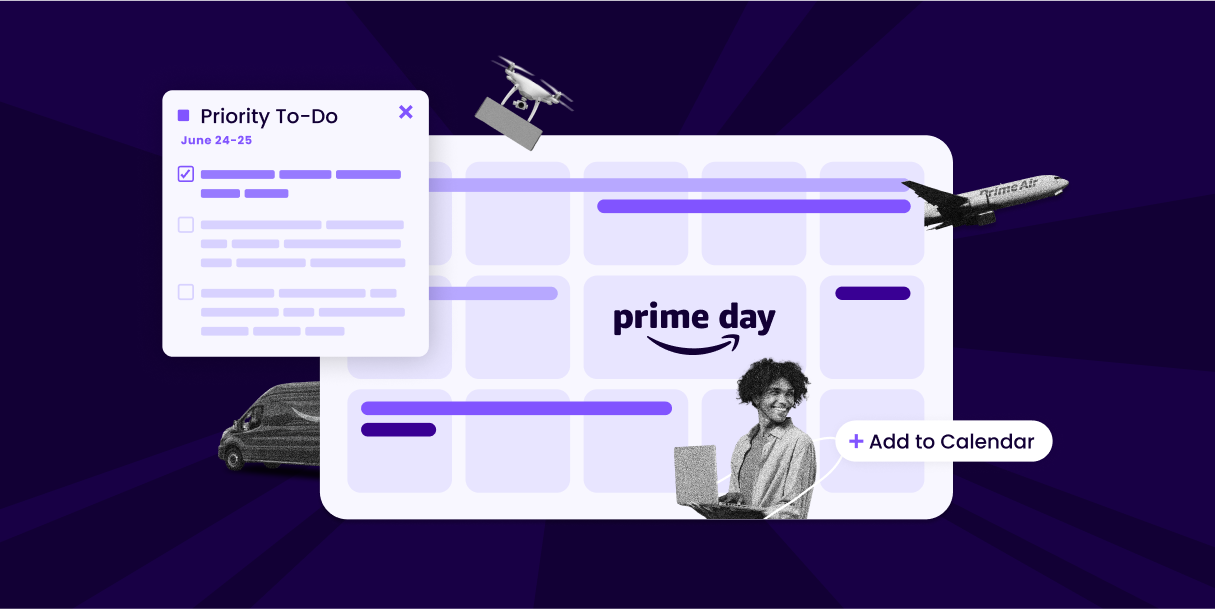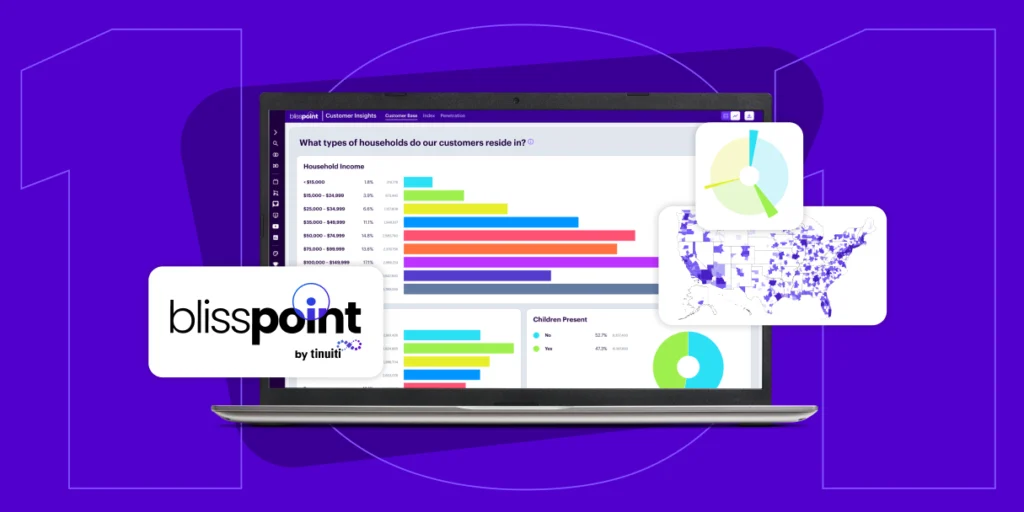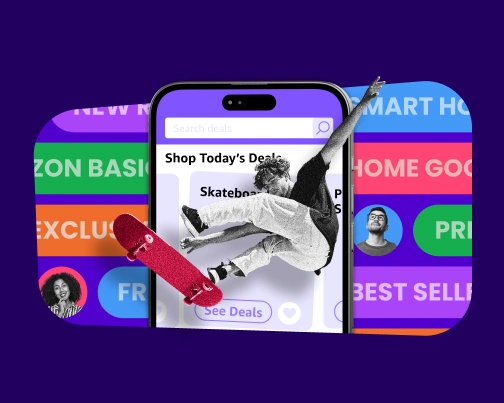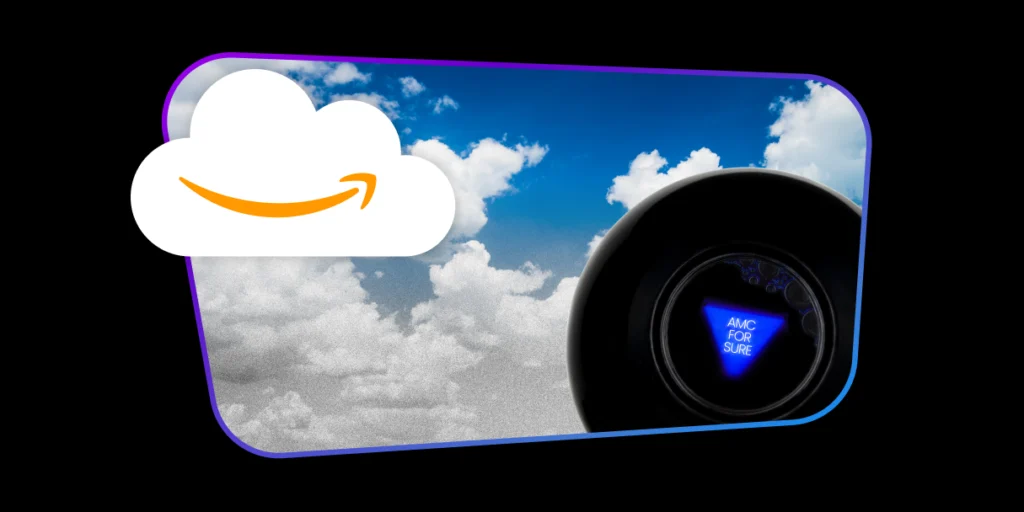
Ready for Amazon Prime Day? 10+ Best Practices for Brands [2025 Guide]

Prime Day is one of the biggest sales holidays, and advertisers are increasingly savvy to the opportunity inherent in this event. After all, putting your hottest deals right in front of high-intent shoppers is bound to result in massive downstream benefits. Consider it this way: Last year, customers spent $ 14.2 billion throughout both days, and 66% of purchases came from new-to-brand shoppers.
That’s a ton of potential to not just make money, but meet new customers. And this year has the potential to be even larger with eager shoppers looking to save big.
The big question is: Are you Prime Day ready?
From an end-to-end channel management approach, the following post will outline what you should do before Prime Day to maximize sales and make this your most successful Prime Day yet.
What is Amazon Prime Day?
Amazon launched Prime Day back in 2015 to celebrate its 20th anniversary. The first Amazon Prime Day was a one-day retail holiday exclusive to Prime members. Since then, Prime Day has overtaken Black Friday and Cyber Monday as the biggest annual sales event on Amazon, with better deals on more products resulting in increased sales and Prime memberships.
It would be fair to say that Prime Day more than just a sales event – it’s an inflection point for savvy brands. The allure of jaw-dropping deals attracts new customers and loyalists alike to the marketplace, presenting a golden opportunity to move massive volume of mid-tier or overstocked products. And all of this activity creates data. You’ll get data about your product’s performance, your target customer’s behavior, and intel on your competitor’s marketing strategy.
Wondering what’s motivating shoppers this year? Consider these facts, hot off the presses from our 2025 Amazon Prime Day Study:
- Consumer enthusiasm is through the roof. Over 80% of Prime members surveyed expect to shop on Amazon during Prime Day this year, which is an increase from last year
- Deal expectations are just as high, with two-thirds of Prime Day shoppers looking for at least 30% off
- Shoppers aren’t just looking to browse; 41% expect to spend more than last year
- Nearly two-thirds of shoppers believe Prime Day is a better opportunity to shop on Amazon than Black Friday and Cyber Monday.
This makes Prime Day an opportunity to not only sell tons of product, but also refine your promotional strategies for Q4.
When is Prime Day 2025?
While the official date for Prime Day 2025 hasn’t been announced yet, it’s safe to assume it will take place in the middle of July. In 2024, it took place between July 16 and July 17. The year before that, it was July 11 to July 12. Amazon has followed this general trend, with few exceptions, since the late 2010s.
However, this year will have one key difference: Amazon recently informed independent sellers that Prime Day 2025 will be a four-day event. With that in mind, Prime Day 2025 could take place during the week of July 7, 2025.
With the longest ever Prime Day (Prime Week?) fast approaching, the importance of solid preparation cannot be overstated. Prime Day represents a chance for brands to solidify their presence, attract new customers, and boost sales.
But keep in mind that success not only hinges on the deals themselves but also on planning and the ability to meet critical deadlines. Missing a deadline could mean lost opportunities and diminished visibility. Here are a few important dates to keep in mind:
- March 18: Brands can begin to schedule deals for Prime-Exclusive Best Deals and Lightning Deals
- May 5: Brands can begin to submit Prime-Exclusive Price Discounts. The submission window closes 6 hours before Prime Day starts
- May 23: Deadline for brands to schedule Prime-Exclusive Best Deals and Lightning Deals
- June 9: Deadline for inventory using Minimal Shipment Splits to arrive at Amazon fulfillment centers
- June 18: Deadline for inventory using Amazon-optimized Shipment Splits to arrive at Amazon fulfillment centers
How to Prepare for Prime Day 2025
We often say that 80% of your Prime Day success can be attributed to your pre-event preparation. Below, we’ll dive into the tried-and-true tactics that we recommend to our own clients. If you’re short on time, here’s the tl;dr:
- Check your inventory levels — An oversight here can lead to missed sales and kick you out of the buy box
- Evaluate your account’s health — The only thing worse than stocking out prematurely is not being able to sell anything at all
- Analyze your historical performance — Prior Prime Days are the secret to better ROI and more informed decisions
- Optimize product listings early — The best time to improve your creative, copy, and keyword strategy is right now
- Set aside additional CPC bids — Prime Day means pricier bids, so allocate your budget accordingly
- Boost awareness on social media — Brands can score more customers by finding them outside of Amazon
- Set up campaigns early — Build and test your campaigns as soon as possible to ensure you’re not scrambling before key deadlines
- Create a variety of offers — Some of your future customers like coupons, others like bundles, some stalk the Lightning Deals
- Check your reviews — Manage poor reviews now, and focus on providing five-star experiences leading up to the event
- Select the right products — Prime Day products should be well-reviewed, high-converting, and preferably trending
- Use Amazon Stores — A storefront helps you centralize your deals in one place, increasing consideration
- Use Amazon Posts — Highlight your top products for image and video-led browsing
Let’s take a closer look:
1. Check Your Inventory Levels
We say it every year and we will say it again: Don’t stock out!
Stocking out can lead to multiple types of disasters. When a product is out of stock, potential customers may turn to competitors If you frequently stock out, you risk losing the buy box to competitors who have products available. Additionally, longer ship times may lead to order cancellations if you don’t stock enough product in regional Amazon’s fulfillment centers. This can significantly reduce visibility, revenue, and even customer loyalty.
On the flip side, selling consistently and maintaining inventory levels positively impacts your Amazon SEO standing. The more you sell, the better your product ranks in search results, leading to increased visibility and potential sales. A successful Prime Day deal, for example, could boost your rankings on the Amazon SERPs for the rest of the year. But if you stock out, you’d be leaving those potential ranking gains on the table.
This Prime Day, make sure you have enough inventory for your promoted products and best sellers. You can generally expect Black Friday and Cyber Monday numbers to fall in line with Prime Day’s, so if you have data from those sales events, use it to determine your inventory strategy for Prime Day.
Know that there’s a balance between keeping enough inventory in stock to meet demand and overstocking. And if you’re not sure exactly where that line is, Amazon’s Inventory Performance Index can provide some clarity.
2. Verify Your Account Health
You don’t want to find out that one of your most profitable ASINs is suspended the weekend before the event. So, proactive account health management is non-negotiable.
Sellers should always keep a watchful eye on the Account Health dashboard, located within Seller Central. But leading up to Prime Day, we recommend near-daily check-ins to ensure there aren’t any outstanding suspensions, suppressed buy boxes, or general indicators of poor performance. This applies for the seller’s entire account, not just the ASINS slated for Prime Day deals.
Brands should also visit the Voice of the Customer report in the weeks prior to the event. It will show feedback about your product quality, issues with item descriptions, or even flag odd mishaps at the fulfillment center. Otherwise, an ASIN could be flagged during the lead-up to the event, resulting in lost sales. Alternatively, if the ASIN isn’t flagged but the product is unsatisfactory to buyers, the reputational damage and cost of managing returns could be exorbitant.
Finally, check out your Returns Report. We recommend downloading the report and sifting through the data to find items with high return rates, then evaluating the cause for the return. Sometimes, it’s a fluke – the product was ordered by mistake or the postal worker couldn’t deliver the package. However, other types of returns can indicate problems with your product display page, product quality, packaging, or fulfillment processes.
3. Analyze Your Historical Performance
Analyzing historical performance is crucial for refining future strategies and maximizing ROI. Reviewing past Amazon ad campaign performance, Amazon Marketing Cloud insights, or first-party data is invaluable in guiding campaigns and ad placements. These provide insights into consumer behavior, previous sales performance, and product selection trends, allowing businesses to make data-driven decisions.
When evaluating the performance of promotions during events like Prime Day or Prime Big Deals Day, it’s essential to look beyond pure sales numbers. Consider factors such as the types of offers, promotional efforts, and advertising costs associated with selling each product. Return on advertising spend (ROAS) becomes a critical metric in assessing the effectiveness of promotional activities.
Leveraging first-party data allows businesses to gain a deeper understanding of their customers’ preferences, behaviors, and purchasing patterns. This data can be used to personalize marketing messages, tailor product recommendations, and optimize advertising placements, leading to more targeted and effective campaigns.
When pulling historical data, remember that more sales can mean more returns. Don’t forget to check your returns report using the 30 days following Prime Day – that’ll cover the return window for the products sold during the event.
4. Start Optimizing Your Listings Early
Optimizing your product detail pages should be one of the top priorities for your brand this Prime Day. When you optimize your listings, you have the opportunity to reach consumers more effectively as your listings will show up when and where shoppers are searching.
Check out a few of our quick tips for optimizing your listings:
- Increase budgets for must-win keyword campaigns – Identify top-performing keywords and allocate higher budgets accordingly.
- Increase bids on high impression, short-tail keywords – Identify keywords with high impressions but low conversions, then gradually increase bids while monitoring performance.
- Audit and update listings – Review your listings for accuracy and completeness using tools in Amazon Seller Central and Vendor Central. For example, have you listed high-opportunity keywords in our title? Are your product bullets well-written and descriptive of the product features?
- Fix inactive or suppressed listings – Ensure you are following Amazon’s guidelines and that you are including all the information Amazon requires when it comes to your listings.
- Add a featured video – Did you know that 96% of consumers report that video helps them make purchase decisions? For a high-stakes event like Prime Day, adding a compelling product video to your listing can make all the difference.
- Start A/B testing early – A/B testing involves changing a single variable in your product listing, such as title text or images, and measuring its impact on metrics like impressions and conversions. Identify elements for A/B testing now so you have plenty of time to gradually optimize for conversions before Prime Day.
- Optimize titles and descriptions for SEO – To aid shoppers and improve search visibility, draft concise, keyword-rich titles, descriptions, and bullet points. However, keep in mind that real shoppers will read your search optimized content, so make sure it’s easy to read and not completely stuffed with keywords.
- Enhance with visuals and A+ content – Brands can put up to six images and one product video on their listings, and brands that take advantage of that real estate are likely to boost their conversion rates and search visibility. As a next step, utilize Amazon A+ Content to provide additional details and comparison charts, enhancing brand perception and differentiating from competitors.
As you work through these optimizations, montior how these changes impact Rufus responses. While Amazon has been tight-lipped about the elements Rufus prioritizes in its recommendations, Tinuiti strongly suggests that changes to PDP content and text is among the most influential components in Rufus’ interactions with shoppers.
“From an operational standpoint, detail page content for images and copy descriptions are going to differentiate your product from a large selection of heavily discounted products; brands should optimize their detail pages to ensure maximum conversion.”
Emily Schwebs Manager, Retail Operations at Tinuiti
5. Set Aside Additional Budget for CPC Bids
Keep in mind that Prime Day is highly competitive which means ad space will cost more money on the platform. If you set your caps too low, you’ll be outbid and it’s unlikely that consumers will see your ads. If you don’t cap your spend, then you might end up running out of budget quickly.
Tinuiti’s Tanya Valle, Client Partner, Sr. Manager (CPG) + Amazon Solutions Lead, weighs in with a few of her top tips and bidding best practices for Prime Day…
- Identify the top performing keywords and targets from the last 30 days that meet business KPI targets. Increase bids against these by 10-15% during Prime Day and/or brand’s promo/deal moments.
- Increase branded keyword/targets by 10-15% to start and monitor from there.
- It’s not recommended to increase bids if a brand does not have any deals – rather, “ride the wave” of traffic soaring on Amazon.
- Monitor your bids and budget throughout Prime Day and make changes accordingly.
- Keep a list of all your changes so you can revert back post Prime Day.
During Prime Day, Amazon sees a surge in ad demand, driving up competition and ad costs. Brands need higher bids to stay visible. However, external channels like Facebook or Instagram don’t see similar cost spikes. Let’s take a deeper look at how brands can boost Prime Day awareness on social media and through influencer marketing…
6. Boost Awareness on Social Media and Other Sites
Hate to break it to you, but if your target customer isn’t hearing about your brand before Prime Day, you’re losing mindshare to your competition.
That’s why we recommend brands invest in ad placements off of Amazon. Specifically, utilize your social media channels to build the hype, and splurge a little on more paid social ads. Trust us, it’s a drop in the bucket compared to the CPCs you’ll be bidding on during Prime Day. Look into buying some ads on Instagram, TikTok, Pinterest, Google Ads, or even video platforms like YouTube.
While you’re at it, don’t forget to also take advantage of the booming influencer market as well. Influencer marketing statistics show that over 90% of consumers engage influencers on a weekly basis using platforms like Instagram, YouTube, TikTok, and Snapchat. Influencers help customers build more trust with your brand, making them more likely to take the plunge and try your product for the first time. So, why not use influencers to rev up demand ahead of Prime Day?
Amazon also offers its own resource of social influencers through the Amazon Influencer Program. This program connects social media influencers with Amazon. Influencers recommend products and earn commissions on purchases their followers make through their links and brands benefit by getting exposure to the influencer’s audience and leveraging their credibility.
“Influencers are incredibly effective for brands because they are authentic storytellers who emotionally connect with and are trusted by their audiences. But that is just one piece of the Influencer puzzle. Tinuiti understands the magic in omnichannel integration with other digital marketing tactics and the ability to measure Influencer performance beyond vanity metrics, truly making it a full-funnel driver. The integration across functions including Social, Affiliate, and ecommerce create a larger amplification in a highly competitive space for brands to grow their business.”
Crystal Duncan EVP, Brand Engagement
7. Set Up and Test Your Amazon Advertising Campaigns Early
Brands should leverage the additional traffic coming to Amazon as well as the higher conversion rates by approaching tentpole events like Prime Day with a three-tiered approach. A well-rounded advertising strategy that targets different areas of the advertising funnel during the lead-up period, the promotional period, and the lead-out period will allow you to maximize your reach to meet return and awareness-based goals.
Using Search and Display ads together to form your Prime Day tactics allows you to not only capture the demand of those who are actively searching on Amazon but also to generate demand by layering in mid and upper-funnel strategies. Display ads will help build awareness about your products, while search ads will help drive consumers that are ready to purchase right to your listing. Also, test out some new campaign types and betas that Amazon has made available to advertisers. They might give you a competitive edge.
We recommend starting these promotions before Prime Day, with the goal of improving both traffic and “add to cart” metrics. Best case scenario, you increase your sales, get your products featured on the user’s personalized Prime Day homepage, and get valuable information for demand forecasting. Worst case scenario, your target audience isn’t responding to your ads – and now you have a few weeks to fine-tune them for more engagement. Either way, it’s a net benefit.
You can also use past Prime Day campaigns and metrics to guide you, though keep in mind that the ecommerce landscape and consumer preferences look different every year.
“With the increased traffic coming to Amazon during Prime Day to hunt for deals, it is critical for brands to target the middle and upper part of the funnel to drive incremental purchases. Utilizing Amazon DSP to target users who are in-market for your brand’s deal but not actively visiting your product pages is a great tactic to increase incremental sales during Prime Day.”
Joe O’Connor Sr. Director, Innovation & Growth at Tinuiti
8. Create a Variety of Compelling Offers
Prime Day shoppers are on the hunt for the best deals, so it’s important to offer them multiple ways to save money on the big day. There are a variety of deals your brand can implement including coupons, lightning deals, BOGO deals, and more. Check out all of your options in Seller Central and Vendor Central so you can further incentivize shoppers on Prime Day and make sure you have your deals in by Amazon’s deadline
Here’s a brief overview of ad types you can use this Prime Day, their appearance, target customers, and why brands might choose to use them:
- Sponsored Products: These ads appear in search results and on product detail pages, blending in with organic listings. Sponsored Products Ads are effective for converting shoppers actively searching for specific products.
- Sponsored Brands: Featuring a custom headline and brand logo, Sponsored Brands Ads appear above search results, enhancing brand visibility. Ideal for promoting multiple products or brand messaging.
- Sponsored Display: Brands can use the Amazon DSP to maximize the reach of Sponsored Display Ads using audio, video, and traditional display placements as they shop on Amazon and browse off-Amazon.
- Product Bundles: Offering added value and convenience, product bundles help brands combine complementary items or offer discounts for purchasing multiple products together. Increase average order value and encourage repeat purchases.
- Lightning Deals: These limited-time offers available to Prime members, featuring significant discounts and creating a sense of urgency. Lightning Deals are known for driving sales velocity, clear inventory, and increase product visibility.
- Prime Exclusive Discounts/Event Deals: Exclusive discounts for Prime members during events like Prime Day or Black Friday can help drive traffic and sales among Prime members seeking exclusive deals.
- Coupons: Digital coupons provide instant savings at checkout, encouraging purchases and incentivizing trial, new product promotion, and rewarding loyal customers.
- Subscribe & Save: If your product is a repeat purchase, you need to aggressively push customers to Subscribe & Save. Use Prime Day to offer an unbelievable one-time subscription deal – it’ll help you retain customers without buying all the ads.
- Other Promotions: Various promotions like BOGO or percentage-off discounts appear on product detail pages and search results, attracting customers with enticing offers.
With that said, keep in mind that Amazon restricts some types of offers. For example, you can’t give away items, such as a small free gift with a larger purchase. Additionally, some offers that drive sales on other platforms – like free shipping – are unlikely to catch the attention of Amazon shoppers who view free shipping as table stakes.
9. Check Up on Your Product Reviews
Regularly monitoring and managing product reviews is essential for maintaining a positive brand reputation and maximizing sales. Positive reviews influence purchase decisions and improve product visibility. To garner more reviews, utilize Amazon’s “Request a Review” button and provide top-notch customer service.
It’s important to respond professionally to both positive and negative reviews, addressing concerns promptly and taking proactive steps to resolve issues. By actively managing reviews, sellers and vendors can enhance their brand image, increase customer satisfaction, and drive sales success on platforms like Amazon.
10. Promote the Right Products
It’s important to pick the right products to advertise on Prime Day. And “the right product” doesn’t mean your top ASIN; it could be your middle-tier or overstocked products that are eating away at warehouse space.
Start by taking a hard look at every item in your Amazon catalog. Are you storing them in your own warehouses, or are you paying to keep certain items stocked for FBA? Do you have products that just aren’t selling at the velocity that they used to? Or, do you have a product that’s just so much better than the competition’s, but hasn’t penetrated the market yet?
With that said, don’t necessarily ignore your best-selling or most successful products for optimal ROI. It’s also a good idea to familiarize yourself with this year’s trending items (back-to-school products, electronics, etc.) to see how your brand can capitalize on the increased momentum. It’s all about finding the balance between short-term and long-term gains.
Once you’ve found your ASINs of choice, make sure they meet the following criteria:
- Are in stock and easily replenishable
- Have at least 15 reviews
- Have a 3.5-star rating or higher
- Include optimized images
- Include branded and keyword-optimized content
11. Create a Dedicated Amazon Store Subcategory Page
If you have an Amazon Store, consider creating a dedicated Prime Day subcategory. Use it to feature your Prime Day deals and discounts, and treat it as your landing page for all things Prime Day. When you have Prime Day ads on Amazon, pointing users to a specific landing page makes it easier for them to convert into customers.
12. Activate Amazon Posts and Feature Priority ASINs
If you haven’t explored Amazon Posts, now is the time to get started. Amazon Posts allows brands to duplicate what they’re doing on social media channels like Instagram within the Amazon Marketplace. Its function is similar to that of a social media feed.
Each brand is allowed to publish a stream of curated posts where you can show your products in action. This helps your products stay top-of-mind to consumers who are shopping on Prime Day. We recommend featuring priority or top-performing ASINs to stir up additional buzz and awareness of your specific product(s).
What to do on Prime Day
Prime Day is never a “set it and forget it” event. While 80% of your effort should be focused on preparing for Prime Day, execution is everything. Make sure your deals are live and running, then continuously monitor those deals (and your ad budget) and get ready to shift your strategy based on live performance data. We recommend the following:
- Keep vigilant watch over PDPs. We check our client’s accounts at least three times a day, and you should do the same. Make sure your deals are still live, your prices are accurate, and there’s no technical glitches messing with your strategy.
- Expect the unexpected. Prime Day is going to be a four-day event. You’ll need more than just a backup plan. Keep a rainy day fund so you can invest extra ad budget into top-performing products, or keep some coupons in your back pocket to get those products out of the fulfillment centers. Also, sometimes Amazon’s own systems have hiccups – so familiarize yourself with their Urgent Help options.
- Stay agile and flexible. Closely monitor your campaign performance and shift budgets to your strongest campaigns to double down on success. Use your own live campaign data to ensure your bids are set appropriately and your sales are scaling properly.
- Do some market research. If you have a moment to catch your breath, do some sleuthing on the competition. What discounts are they offering? Which products are they focused on moving? You don’t have to act right away, but you can use that intel to understand how they tackle future tentpole events.
- Do not stock out. If your FBA stock is depleting, make sure your backup fulfillment methods are functioning as expected.
- Maintain buy box dominance. Continuously check your Buy Box status on key ASINs and ensure you’re winning the Featured Offer. Losing it, even temporarily, can significantly impact deal performance.
Brands are looking for ways to improve ROI during Prime Day. This includes separating low-converting keywords, tracking conversions, targeting competitive products, and identifying the change in keyword trends and search volumes. Staying on top of this will maximize visibility. In addition, bidding higher will result in a higher rank, and staying on top of your budget allows you to bid higher.
Best Practices for After Prime Day 2025
Each Prime Day is an invaluable opportunity to gather data, learn more about your brand’s performance, and optimize for the future. Here are key areas to be mindful of:
Deep Dive into Outcomes
One of the best things a brand can do after Prime Day is pay attention to actions.
Dig up analytics and demographics from your Prime Day event and check to see if there was a noticeable increase in things such as new-to-brand customers or new search terms. The goal is to identify your successes and failures and make the changes necessary (or mimic the actions that produced positive results for your brand) to facilitate future growth.
“Whether your Prime Day sales met, exceeded or underperformed against your goals, it is critical to understand what influenced those results. Were your Sponsored Ad campaigns consistently visible throughout the event? Did you have the right onsite/offsite media mix to maximize reach across your key audiences? Are there any other audiences, or keywords, to consider targeting for your next sales event? These are just some of the questions that can help you understand what factors influenced your Prime Day performance. Amazon’s suite of analytics tools, including Amazon Marketing Cloud, can help uncover key insights that will improve your strategic approach for the next major sales event.”
Joe O’Connor Sr. Director, Strategic Marketplace Services at Tinuiti
Vet ASINs Using the Returns Report
Your underperforming ASINs have important performance marketing data behind them. About 30 days after Prime Day (allowing the return window to largely pass), download your Returns Report and sort it by ASIN. Focus on returns that are within your control, such as “defective,” “not as described,” “missing parts,” etc. Compare that against the total number of returns to calculate the “real return rate” as a percentage of sales for each ASIN.
Now, you can see which products aren’t going over well with your customers. Critically examine the return comments and reasons. Is the PDP misleading? Is there a quality control problem? Use this invaluable data to make tangible fixes to your product or listings before the critical Back-to-School and Q4 peak seasons.
That said, don’t be tempted to only zero in on mistakes. Look for the “hero products.” Which items surprisingly popped off during Prime Day, perhaps even without significant media support? Did any items go viral or find an alternative use case you hadn’t considered? These unexpected winners could be key to your strategy for future tentpole events.
Watch Your Reviews
Pay attention to the quality of reviews, not necessarily the quantity. It’s essential to see what people are saying, so you have the opportunity to improve and adapt. After the event, taking a good look at your reviews can affect future strategies and changes, product developments, listing changes, updates, etc. Another good practice is paying attention to competitors’ reviews and seeing what their customers are saying. Doing this can give brands an upper hand to improve and shine in areas where their competitors may not and win over a more extensive following.
Sustain the Momentum
A successful Prime Day isn’t just about tons of sales – it’s about making new customers for life. Implement strategic retargeting campaigns aimed at those who purchased during Prime Day, as well as those who showed interest but didn’t convert.
Try to entice first time customers to buy from you again. You could give them a reorder coupon to increase consideration. Or, better yet, use Subscribe & Save coupons to convert them into passive, recurring customers. This way, Prime Day will continue to deliver dividends for months or years to come.
Learn More
The tips in this guide will help your brand set the stage for success during Prime Day 2025 – but we couldn’t give away all of our secrets in just one article. If you’re serious about succeeding on and beyond Prime Day, you’ll need to watch our 2025 Prime Day Panel to get all the exclusive insights.
Here’s a taste of what you’ll get:
- A step-by-step look at key phases of Prime Day, from planning to post-event analysis
- Actionable strategies to convert customers and drive sustained growth beyond the event
- Proven techniques to retain hard-won Prime Day customers and re-engage them with Amazon’s ecosystem and other retail media networks.
Your competitors won’t know what hit them.
You Might Be Interested In











